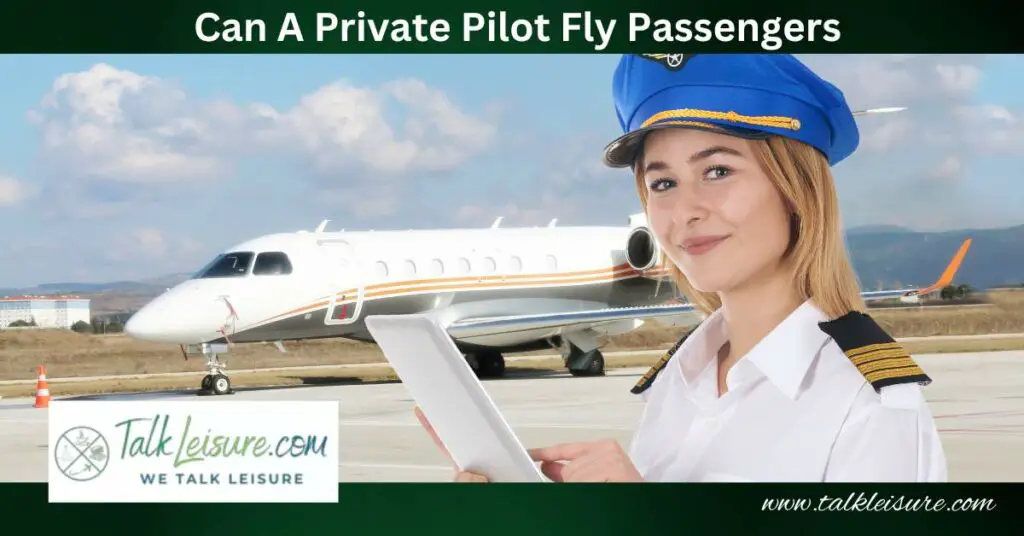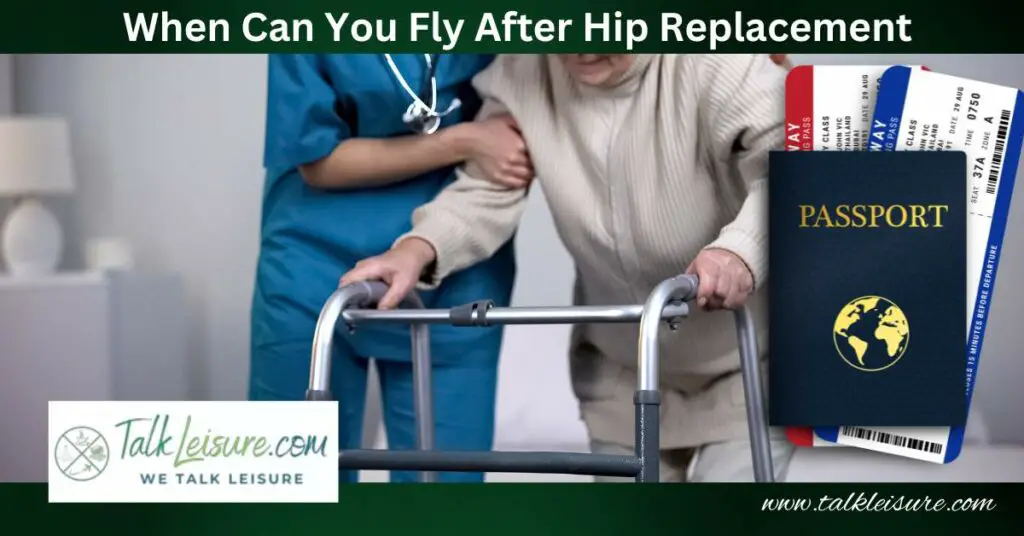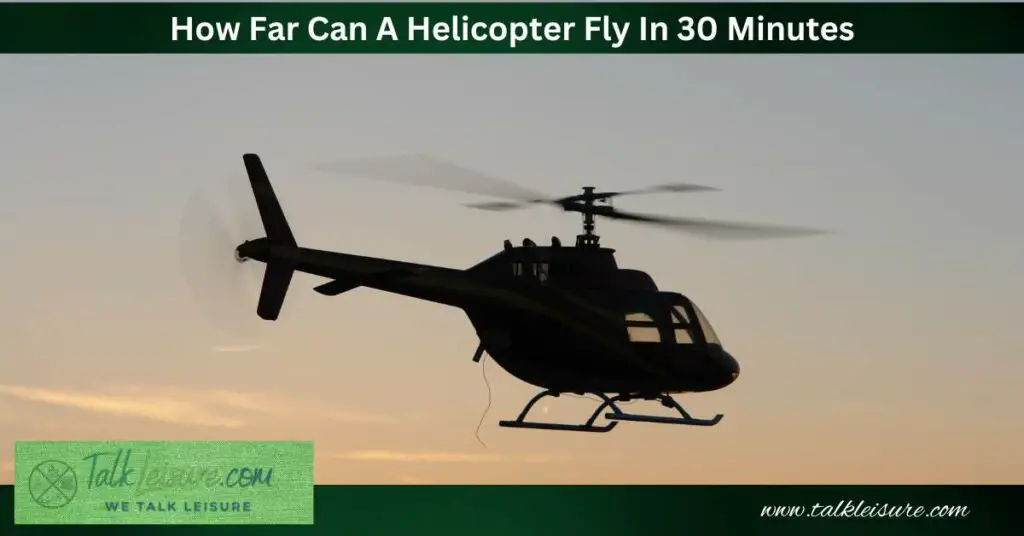You’re not alone if you’re curious whether a private pilot can fly passengers.
This is a common question among those interested in pursuing a flying career or simply exploring the world of aviation.
Several factors determine a private pilot’s ability to fly passengers.
In this post, we’ll delve into the ins and outs of private pilot licenses and explore what it takes to carry passengers in the air legally.
Whether you’re a seasoned pilot or just starting to explore the world of flying, you will find something of interest in this informative guide.
Becoming a private pilot can bring the joy of flying to new heights, but many wonder about the limitations.
One of the most common questions is whether or not a private pilot can fly passengers.
The answer is a resounding yes!
However, there are certain requirements and limitations that pilots must abide by when carrying passengers.
Despite the limitations, becoming a private pilot offers the freedom and opportunity to share the joy of flying with others.
What Is A Private Pilot License?
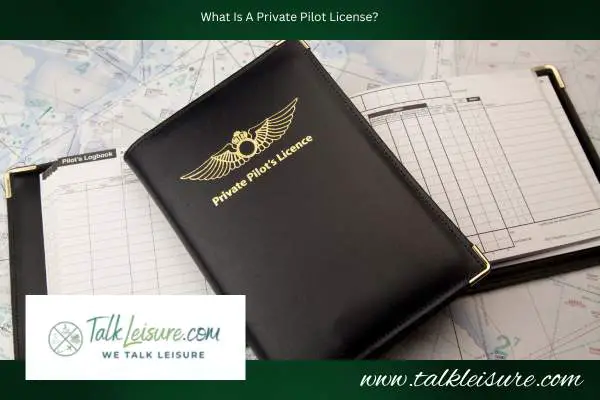
This license is obtained after completing specific training and passing both a written and practical exam.
It is the most common type of pilot license and allows a pilot to operate a single-engine aircraft under visual flight rules (VFR).
A PPL requires a minimum of 40 hours of flight time and must cover various areas of flight training, such as cross-country flying, basic instrument training, and night flying.
The license holder must also maintain proficiency by meeting certain flight hours and medical requirements.
Pilots take anti-anxiety drugs to over anxiety during the flight. However, drugs like valium are not recommended for pilots. Some passengers take valium to fight the fear of flying.
As a pilot, you must be concerned about the medications that you are using.
A private pilot’s license is a great accomplishment and can open up many personal and recreational flying opportunities.
Can A Private Pilot Fly Passengers?
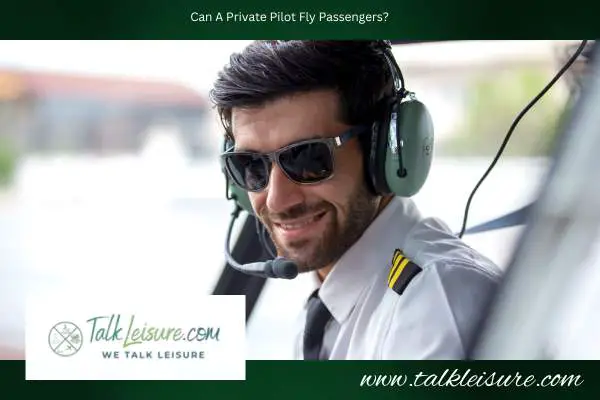
Becoming a private pilot is an exciting opportunity that opens up the possibility of flying your friends and family to different destinations.
Once you have obtained your private pilot license, you can legally carry a certain number of passengers, depending on the size and type of aircraft.
Abiding certain regulations, private pilots may also allow the passenger to fly a aircraft.
Can A Private Pilot Fly Passengers Internationally?
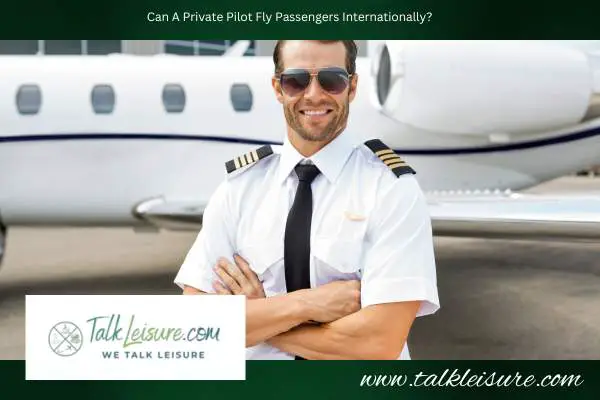
If you hold a private pilot’s license, you may wonder whether you can fly passengers internationally.
The answer is yes, you can. However, there are certain requirements that you must meet.
Firstly, the aircraft you are flying must be registered in the USA.
Secondly, you must comply with the regulations set out by the country of destination.
This means you should check with the relevant authorities to ensure you have all the necessary documentation and certifications before embarking on an international flight.
It’s also worth noting that not all countries have the same rules and regulations regarding flying, so it’s important to do your research beforehand.
But with the right preparation and mindset, flying passengers internationally as a private pilot can be a thrilling and rewarding experience that opens up a whole world of possibilities.
Can A Private Pilot Fly Passengers At Night?
As a private pilot, you can fly at night, subject to requirements set by the FAA.
To carry passengers at night, you must have completed a minimum of 3 takeoffs and three landings at night to a full stop in the same category and class of aircraft within the preceding 90 days.
You must also meet the FAA’s nighttime requirements, including completing night currency training.
This training involves 3 hours of night flight training in a single-engine airplane, including one cross-country flight of over 100 nautical miles, ten takeoffs, and landings to a full stop at an airport.
You should note that instrument training is also recommended for flying at night, as there may be no visible horizon.
Remember to prioritize safety and ensure comfortable flying at night before carrying passengers.
Can A Private Pilot Fly Passengers In Bad Weather?
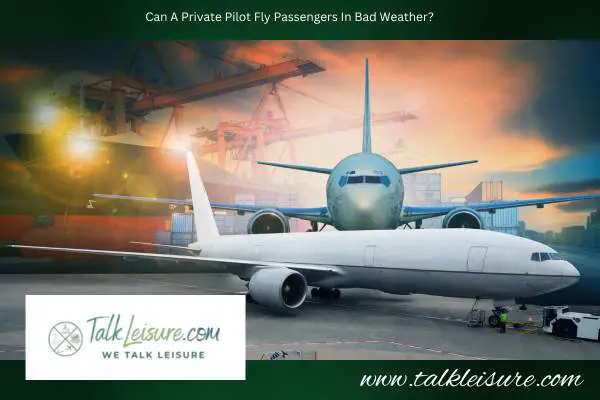
Regarding flying passengers as a private pilot, weather conditions should always be a primary consideration.
Even when allowed to fly in poor weather, heavy rain can cause turbulence and obstacles that can impact navigation and put passengers at risk.
Here are some important weather considerations to keep in mind when flying passengers as a private pilot:
1. Maintaining adequate visibility is crucial when flying in the rain. If visibility is compromised due to heavy rain, pilots should either avoid flying or wait for conditions to improve.
2. Turbulence can be a significant challenge, especially when flying in rainy conditions. Pilots should follow recommended procedures for navigating turbulence to maintain control and minimize the risk of accidents.
3. Pilots not trained to fly under instrument flying rules (IFR) should avoid flying in low-cloud conditions or obtain the necessary training and qualifications.
4. Thunderstorms can pose a significant risk, even for experienced pilots. It’s important to avoid them by a safe margin (1–20 nautical miles) and land if necessary.
What Are The Limitations Of Carrying Passengers As A Private Pilot?
As a private pilot, you need to be aware of the limitations of carrying passengers. Below are some of the key points to keep in mind:
You cannot carry passengers for compensation or hire unless you are acting as part of a charitable nonprofit or community event, and the flight is only incidental to that business or employment.
A private pilot may carry passengers for compensation or hire in connection with any business or employment, provided the flight is only incidental to that business or employment and the pilot does not carry passengers or property for compensation or hire.
You cannot take payments for carrying passengers unless it is for reimbursement of operating expenses only, like fuel and oil expenditures or rental fees.
A private pilot may not fly more than three passengers without a commercial license.
The private pilot must not exceed certain limitations concerning the weight and power of the aircraft, altitude, or speed.
A private pilot cannot fly in instrument meteorological conditions like clouds, fog, mist, rain, snow, or ice unless they have completed an instrument flight training program and have logged at least 50 hours of cross-country flight time.
According to the Trump administration policies towards Cuba, there may certain restriction when carrying U.S. passengers to Cuba.
Knowing these limitations can help you operate safely and legally as a private pilot.
Can A Private Pilot Take Payments For Carrying Passengers?
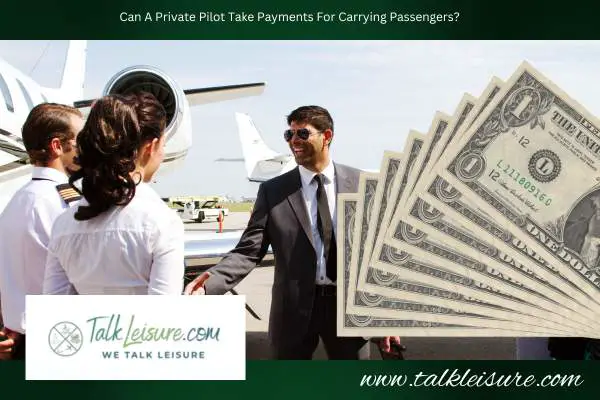
According to the Federal Aviation Administration, private pilots cannot carry passengers or property for compensation or hire.
However, there are exceptions where a private pilot can share expenses with the passengers.
The private pilot can pay less than the pro rata share of the operating expenses of a flight with passengers, provided the expenses only involve fuel, oil, airport expenditures, or rental fees.
Therefore, the private pilot can receive payments from passengers if the payment does not exceed the pilot’s share of the flight expenses.
Still, the expenses must involve only fuel, oil, airport expenditures, or rental fees, and the pilot cannot receive payments for any indirect expenses, such as insurance, maintenance, depreciation, or other capital costs.
Pilots and passengers must also have a common purpose for the flight.
How Can Private Pilots Obtain Additional Ratings And Certifications?
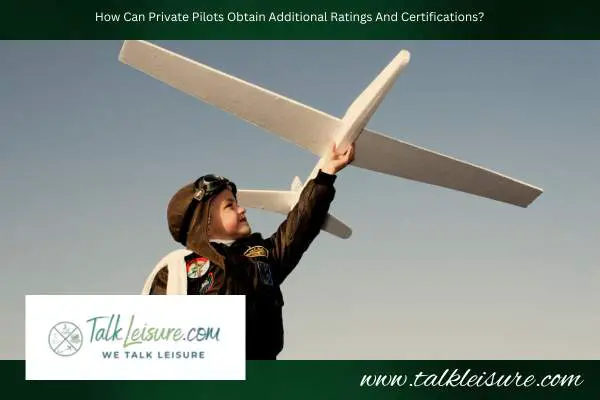
Private pilots can obtain additional ratings and certifications beyond their basic pilot license.
These ratings and certifications allow them to fly different aircraft types and expand their flying capabilities. Some examples of additional certifications include:
1. Instrument Rating: This allows a pilot to fly in poor weather conditions or at night using only the instruments in the cockpit.
2. Multi-Engine Rating: Allows a pilot to fly planes with more than one engine. This rating is necessary for pilots who want to fly larger aircraft or for commercial pilots.
3. Flight Instructor: This allows a pilot to teach others how to fly. This certification requires additional training and testing beyond the basic pilot license.
Private pilots must complete additional training and pass written and practical exams to obtain additional ratings and certifications.
They may also need to log a certain number of flight hours and meet other Federal Aviation Administration (FAA) requirements.
These certifications can be a great way for private pilots to expand their skills and pave the way for future career opportunities in the aviation industry.
What Are The Insurance Considerations For Private Pilots Flying Passengers?
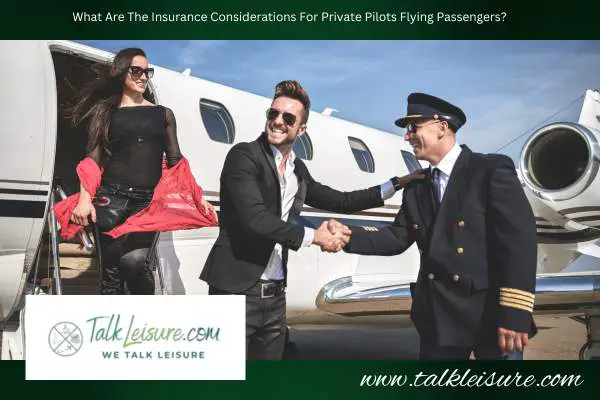
Insurance is a crucial consideration when it comes to flying passengers as a private pilot. Here are some things to keep in mind:
Passenger liability insurance is mandatory for commercial aircraft, but it is wise for private pilots to invest in this coverage as well.
This protects both the passengers and the pilot from potential lawsuits.
Combined single-limit insurance is a good option for those running commercial aircraft operations.
This type of insurance covers all liability claims, including cargo liability.
Ground risk hull insurance is important for incidents that may occur on the ground, such as accidents with uninsured vehicles or other planes.
In-flight insurance covers damage that might occur in-flight as well as on the ground. This is the most expensive type of insurance.
Private pilots should also consider factors such as the type of aircraft they are flying and the nature of their flights when selecting insurance coverage.
Private pilots can protect themselves and their passengers by being proactive about insurance considerations while enjoying the thrill of flying.
Final Thoughts
A private pilot can indeed fly passengers with certain limitations and requirements in place.
They can carry up to three passengers and fly at night or even internationally, as long as they comply with the regulations set forth by the country of destination.
However, they cannot fly for hire or reward, and there are some limitations on carrying passengers, such as weight limitations and the need for certain instruments and training for flying in bad weather or at night.
It’s important for private pilots to always prioritize safety and training to ensure the well-being of their passengers and themselves.
In addition, private pilots can obtain additional ratings and certifications to expand their capabilities and improve their ability to fly passengers in different aircraft or situations.
Becoming a private pilot can be an exciting and rewarding experience, providing opportunities to fly with friends and family worldwide.
FAQs
Can A Private Pilot Fly-In Class A?
One of the exciting things about being a private pilot is the freedom it provides to fly in different types of airspace.
So, can a private pilot fly in Class A airspace?
The answer is yes, but there are some important requirements that pilots must meet.
To fly in Class A airspace, private pilots must have an instrument rating and be operating under Instrument Flight Rules (IFR).
Additionally, their aircraft must have specific instruments and communication equipment to operate in this airspace.
How Long Can The Private Pilot Fly?
When it comes to flying, one question that often comes up is how long a private pilot can fly.
The answer is that there is no set limit for how long a private pilot can fly in one day.
However, certain rules and regulations must be followed.
According to the Federal Aviation Administration (FAA), private pilots must comply with the requirements of Part 91 of the FARs, which govern general operating and flight rules for all pilots.
This means private pilots must rest and recover between flights to ensure they are alert and can fly safely.
Can Private Pilots Provide Flying Lessons?
Private pilots can provide flying lessons, but there are certain requirements they need to fulfill to do so.
Firstly, they must hold a commercial or airline transport pilot license.
Secondly, they must have a valid flight instructor certificate with the corresponding rating for the type of lesson they are providing.
Thirdly, they must be able to pass a medical examination and maintain good health.
Providing flying lessons can be a fulfilling career for pilots and a great way to share their passion for aviation with others.

